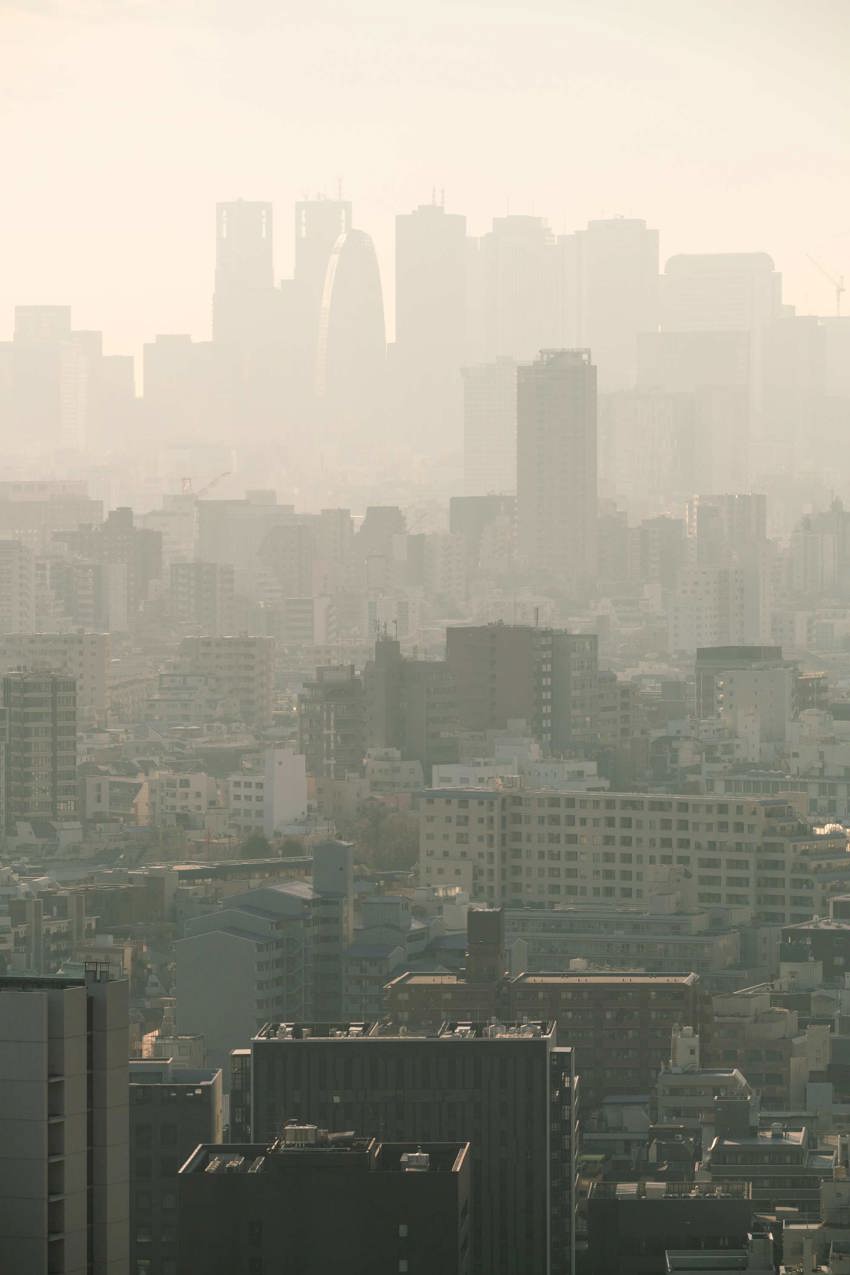What is affecting us?
Many factors are at play in an indoor setting that can cause our bodies and minds to feel and think differently — the quality of air & air pollution, light & daylight, and different sounds & noises, the amount of humidity in the air being the main contributors.
Air pollution
There are many sources of pollution inside a building, and to ensure a healthy indoor climate, the pollutants need to be transported out with efficient ventilation and replaced with fresh air. The pollutants are added to the indoor air from things such as furniture, building materials and electronics — but we humans also pollute the air around us.
'Pollution is the introduction of contaminants into the natural environment that cause adverse change. Pollution can take the form of chemical substances or energy, such as noise, heat or light. Pollutants, the components of pollution, can be either foreign substances/energies or naturally occurring contaminants.' (Definition from Wikipedia)
A few interesting facts about air pollution:
- Pollution is one of the biggest global killers, affecting over 100 million people.
- People who live in places with high levels of air pollutants have a 20% higher risk of death from lung cancer than people who live in less-polluted areas.
- While children make up 10% of the world's population, over 40% of the global burden of disease falls on them.
- Noise pollution is the most neglected type of pollution.
- Antarctica is the cleanest place on Earth protected by anti-pollution laws.
- Public transportation and carpooling can help you to reduce air pollution and save money up to a great extent.
About 80% of the world's population lives in areas where the WHO reccommended values for air pollution are exceeded. By filtering the supply of air into the buidling, the amount of harmful particles is reduced thus improving the health of building occupants.
Want to know more about air pollution?

'Care for the natural world, treat it with a degree of respect and reverence. The future of the natural world is in our hands. In our daily lives, the thing I really care for is not to waste the riches of the natural world on which we depend. Don't throw away food, or throw away power, just care for the natural world, of which we are a part.'
— Prince William, the Duke of Cambridge

Daylight in buildings
Daylight should become the primary light source in every building for health, productivity and sustainability. Daylight creates a visually stimulating and productive environment for occupants in all buildings.
The buildings need to provide a good healthy environment in which daylight can function both biologically and visually, while at the same time replacing electrically created light during daylight hours. Optimal use of daylight, natural ventilation during summertime, and intelligently controlled solar shading are all examples of technologies that — in combination with intelligent building designs — can be used to reduce the energy consumption of new and existing buildings.
Daylighting can help increase worker productivity and decrease absenteeism in daylight commercial office buildings, boost test scores in daylight classrooms in schools, and accelerate recovery and shorten stays in daylight hospital patient rooms.
It is also able to provide appropriate illumination to carry out tasks and gives people a connection with the outdoors. Providing suitable levels of daylight to counteract the need for artificial lighting also allows energy savings.
Three key things to remember about daylight are:
- People perform better in day-lit environments.
- Healthy light is linked to healthy darkness.
- Day-lit environments facilitate better productivity and learning.
Shall we let the daylight in the buildings?
'Soon silence will have passed into legend. Man has turned his back on silence. Day after day he invents machines and devices that increase noise and distract humanity from the essence of life, contemplation, meditation...tooting, howling, screeching, booming, crashing, whistling, grinding, and trilling bolster his ego. His anxiety subsides. His inhuman void spreads monstrously like a grey vegetation.'
― Jean Arp, artist
Taming the noise
Sound is an essential and valuable part of everyday life. But when sound becomes noise, it can negatively affect our health. The noise pollution is a serious health problem that deserves our full attention.
We already know that buildings — we already know about the effects of the air inside — can be potentially harmful to people. And more recently, we also can see that noise can have a major impact on us, our health and our productivity in buildings. However, the effects might be highly individual and difficult to predict, and there are many ways of being exposed to various types of sounds.
The World Health Organization stated that in 2011, an estimated one million healthy life years were lost from traffic-related noise in the western part of Europe only. Important sources for environmental noise exposure are road, railway and air traffic, or building sites. Excessive noise can cause annoyance, sleep disturbance, hearing impairment, increase the risk for heart diseases and hypertension, tinnitus and cognitive impairment, with increasing evidence for other health impacts such as mental health problems.
As we build better and better buildings, one of the critical challenges is the installation of mechanical systems and acoustic characteristics. The role of ventilation is to maintain air quality and comfort for building occupants; however, sound and noise control are becoming one of the biggest challenges in the HVAC industry. So, how can we control something that we cannot hear?
In today's world, and with the continuous development of sound sources and noise control, we can overcome the challenges of variety of noises and sounds. We need to improve all aspects of the indoor environment and above all focus on creating a positive sound, healthy environment within buildings.
So can we tame the noise?

'Typically, you want 40-45 per cent humidity in your home, to keep moisture in the air so that your house doesn't shrink as much.'
― Bryan Baeumler, renovation expert

Low humidity levels
Humidity affects people’s thermal comfort and the indoor air quality, and it is essential for the indoor environmental quality. The optimal relative humidity of the indoor air is between 30-60% (in some regions about 40-60%).
In general, a relative humidity of 20-70% might be acceptable indoors. However, under 20% relative humidity creates really uncomfortably dry air and water content in the air gets to low for meet requirements essential for people (skin, airways) and also for machines (vehicles, electronics, aviation), sensitive materials (for example, historic) and technical / technological processes.
The relative humidity is very important for people’s well-being, but it is still not considered as important as other indoor environment parameters, such as temperature. Maybe because people are more sensitive to variations in temperature than to changes in relative humidity. The lack of a signal for relative humidity is particularly surprising given its well-known impact on comfort.
Humidity has a major impact on the human organism, especially the outer (eyes and skin) and inner surfaces (airways and intestine). Because peoples' noses have small dimensions created by the evolution, they are overloaded when absolute humidity is low. Low absolute humidity indoors reduces the defence of upper airways due to reduced mucociliary clearance, overcooling, reduced immune defence and dehydration of the mucosa.
People do not sense the low humidity indoors, however they respond to dry air and experience problems with a decrease in mucus flow rate. People will blink with their eyes more often, thus reducing work efficiency, going below 15% shows adverse effects on people's cognitive performance.
Also eep in mind, both high and low relative humidity levels had a deleterious and costly effect on the health and productivity of the building's occupants concerning bacteria, viruses, fungi, dust mites, respiratory infections, allergies, asthma, and ozone in the workplaces, at schools and homes.
How low relative humidity should be allowed in buildings?
Air quality, sound, light and air speed: are all other elements that influence how we feel.Anonymous